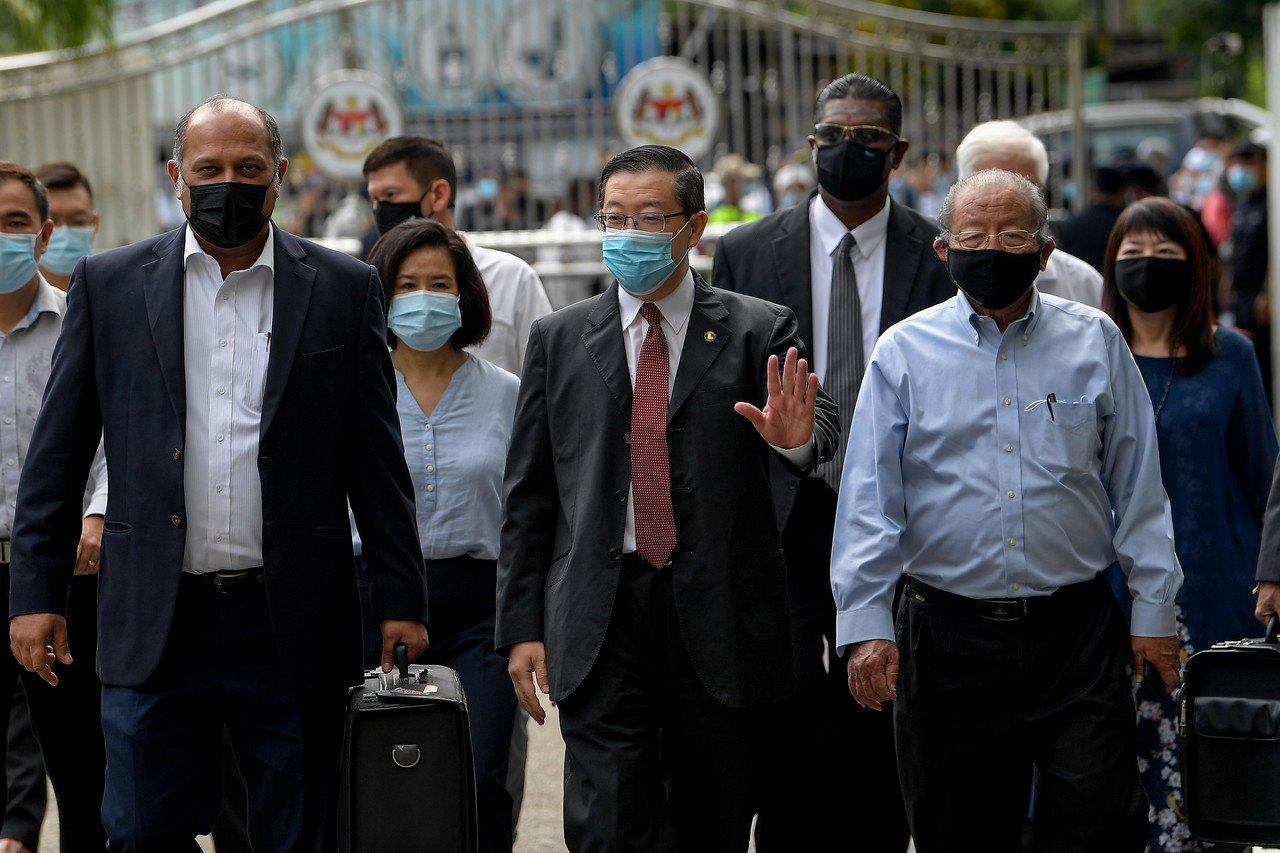Guan Eng’s upcoming trial, DAP’s Achilles heel?
The party has always survived the upheavals of its coalitions but this time, trouble is closer to home.
While DAP appears to be the most stable party following the collapse of the Pakatan Harapan (PH) government, the prospect of its star politician Lim Guan Eng being found guilty of financial crimes could cost it dearly in terms of its reputation.
DAP has always been seen as the party of choice for a large majority of urban Chinese, and it has fallen back on this traditional support base amid the crises and conflicts over the last two decades in the coalitions it joined.
But that could change with Lim’s arrest by the Malaysian Anti-Corruption Commission (MACC) in August, and after the details of what could be the biggest corruption case of the year were published on social media.
Singapore-based analyst Oh Ei Sun told MalaysiaNow that the legal action against Lim had strengthened the common narrative given to the Malays, that DAP is a corrupt party.
“It reaffirms Umno’s portrayal of DAP as corrupt,” Oh, a former political secretary to former prime minister Najib Razak, told MalaysiaNow.
He said the party would need to consolidate its support among the non-Malays, the base which has ensured its survival each election despite the turbulence of coalition politics.
Lim has been charged with soliciting bribes and abuse of power during his time as Penang chief minister in relation to the controversial undersea tunnel project.
The 7.2km tunnel will be the first undersea road link in the country, connecting Butterworth in the mainland to George Town on the island. The construction is a joint undertaking between the state government and Consortium Zenith Construction Sdn Bhd.
In February 2013, the DAP-led Penang government issued a letter of intent to consortium Zenith BUCG Sdn Bhd to undertake a massive infrastructure project.
The comprehensive development was part of the state government’s strategy to mitigate traffic congestion. It was also touted as a way to improve social-economic links.
Other bidders included IJM Corp Bhd, WCT Holdings Bhd and Gamuda Bhd.
As consideration for building the tunnel and bypass roads, Zenith BUCG was to get a 30-year toll concession as well as 110 acres of reclaimed land from the Eastern & Oriental Bhd’s (E&O) Sri Tanjung Pinang 2 (STP2) development.
Some 50 acres of the land is located along the shoreline towards Gurney Drive while the remaining 60 acres will be located on a man-made island.
Critics accused Lim of bulldozing the project through despite protests from environmentalists.
In 2014, Zarul Ahmad Mohd Zulkifli, chairman of Consortium Zenith, said the feasibility study for the undersea tunnel would take about a year to finish as it was “an environmentally sensitive issue for which we need to get Detail Environmental Impact Assessment (DEIA) approval”.
The cost of the study was to be paid through a land swap deal, reportedly worth RM305 million.
Despite the state government’s insistence that not a single sen was paid, in January 2018, its Public Works Committee chairman Lim Hock Seng admitted that RM208 million had been paid for the feasibility study and road design through the transfer to Consortium Zenith of two pieces of prime seaside freehold land at Seri Tanjung Pinang.
The cost to produce the report for a simple 10km paired road with a construction cost of RM377 million was billed at a staggering RM208 million.
Meanwhile, the cost of the much more complicated tunnel, costing RM3.6 billion, was only RM97 million.
In January 2018, Lim, as the Penang chief minister, said the feasibility study for the tunnel was 92% complete.
As of August, the tunnel study was still nowhere to be seen.
Critics point out that despite this, condominium blocks with a gross development value of RM800 million and the Wellness City of Dreams at Bandar Tanjong Pinang, with a gross development value of RM15 billion, have sprung up on land given as payment for the tunnel study.
Critics also say that the project was not awarded via request for proposal (RFP), but the Penang government insists it was through open tender.
In an open tender, parties bid on the same project with the specifications provided by the client.
In an RFP, the client does not provide any plan or project specifications for the parties to bid on. The client only has a rough idea, leaving bidders to submit different proposals.
As such, critics said that since the entire Penang Transport Master Plan was done through RFP, the public had no means by which to scrutinise or compare the proposals.
A set of leaked investigation papers against Lim contains serious allegations of corruption and kickbacks, documents later confirmed by MACC as authentic.
State DAP leaders have not commented on the contents of the leaked papers.
At the centre of the case is why Consortium Zenith paid RM19 million in cash to a middleman in 2017 in an attempt to stop MACC investigations.
Despite admissions to bribery and corruption, Consortium Zenith was not penalised for continuously missing the agreed timelines.
Nur Hasliza Mohd Salleh contributed to this report.
Subscribe to our newsletter
To be updated with all the latest news and analyses daily.
